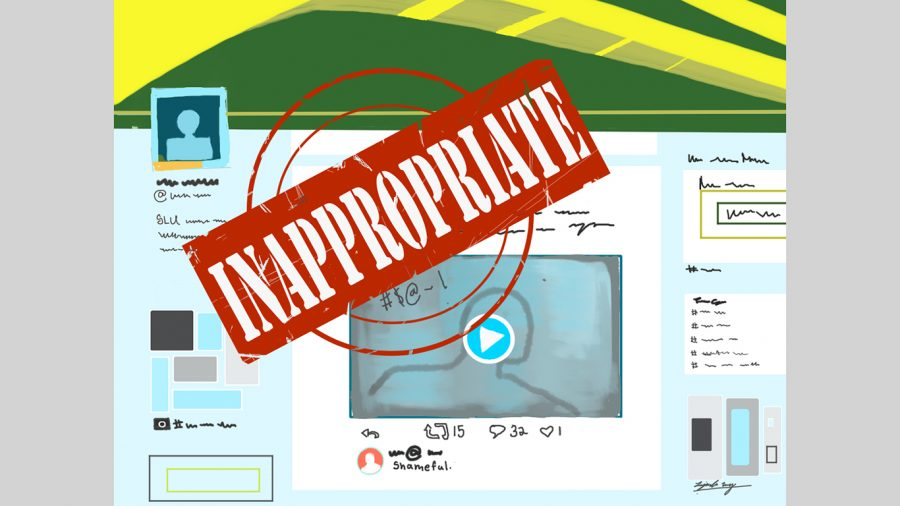OBJECTIONABLE CONTENT ON THE SOCIAL MEDIA

Copyright infringement not intended
In News
- Outrage over the allegations of a leaked objectionable video of women students of Chandigarh University.
Steps taken by government agencies to tackle objectionable media content
- The first step for the investigation agency is to identify the social media intermediary through which the objectionable content (Picture, video, voice message, etc) is being spread.
- Generally, investigation agencies depend on the information of the first arrested accused, who discloses the first method through which the content was shared.
- In complex cases in which the content is being shared on multiple social media platforms, the investigating agencies communicate with all social media intermediaries including Facebook, WhatsApp, Twitter etc.
- Once the social media intermediaries are identified, the investigation agency communicates with the regulating authorities/headquarters of these intermediaries. There are two methods for communication.
- Routine matters in which there is no urgency are pursued through Emergency disclosure methods in which the agency seeks the phone number and IP address of a device which was used to create/record the objectionable/vulnerable content.
- Matters related to national security, threats to human lives and child abuse are followed through Emergency response methods; in this case, the regulating authorities of social media take prompt decisions over applications sent by the investigation agency.
- The Union Government has recently notified the Information Technology (Intermediary Guidelines and Digital Media Ethics Code) Rules, 2021 to deal with the objectionable content on social media.
About Information Technology (Intermediary Guidelines and Digital Media Ethics Code) Rules, 2021
- The Information Technology (Intermediary Guidelines and Digital Media Ethics Code) Rules, 2021, was notified by the Central government on February 25, 2021, relates to the digital news publishers, including websites, portals and YouTube news channels, and Over The Top (OTT) platforms, which stream online contents such as web series and films.
- It is jointly administered by the Ministry of Electronics and IT, and the Ministry of Information and Broadcasting.
- The Rules provide for a code of ethics to be followed by digital news publishers and OTT platforms; A three-tier grievance redress mechanism, which includes:
- Self-regulation by publishers at the first level
- Self-regulation by Self-regulating bodies of the publishers
- An oversight mechanism by the Central government
Key Features of the Rules
- Social media intermediaries, with registered users in India above a notified threshold, have been classified as significant social media intermediaries.
- They are required to appoint certain personnel for compliance, identification of the first originator of the information on its platform, and identify certain types of content.
- They need to appoint a Nodal Contact Person for 24x7 coordination with law enforcement agencies. Such a person shall be a resident of India.
- Appoint a Resident Grievance Officer who shall perform the functions mentioned under the Grievance Redressal Mechanism. Such a person shall be a resident of India.
- Publish a monthly compliance report mentioning the details of complaints received and action taken on the complaints.
- The Rules prescribe a framework for the regulation of content by online publishers of news and current affairs content and audio-visual content.
- A 3-tier Grievance Redressal Mechanism: Social media intermediaries shall appoint a Grievance Officer to deal with complaints and share the name and contact details of such officers.
- The grievance Officer shall acknowledge the complaint within twenty-four hours and resolve it within 15 days from its receipt.
- Ensuring Online Safety and Dignity of Users, Especially Women Users: Intermediaries shall remove or disable access within 24 hours of receipt of complaints of contents that expose the Privacy of individuals.
- Such a complaint can be filed either by the individual or by any other person on his/her behalf.
- Voluntary User Verification Mechanism: Users who wish to verify their accounts voluntarily shall be provided with an appropriate mechanism to verify their accounts and provided with a demonstrable and visible mark of verification.
- Giving Users An Opportunity to Be Heard: Users must be provided with an adequate and reasonable opportunity to dispute the action taken by the intermediary.
- Removal of Unlawful Information: An intermediary upon receiving actual knowledge should not host or publish any information which is prohibited under any law in relation to the interest of the sovereignty and integrity of India, public order, friendly relations with foreign countries etc.
- This Code of Ethics prescribes the guidelines to be followed by OTT platforms and online news and digital media entities.
- Self-Classification of Content: The OTT platforms would be required to self-classify the content into five age-based categories; U (Universal), U/A 7+, U/A 13+, U/A 16+, and A (Adult).




1.png)
